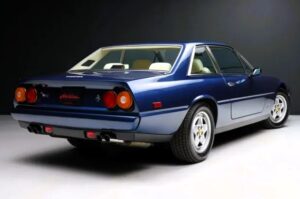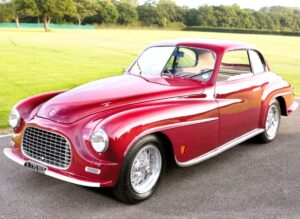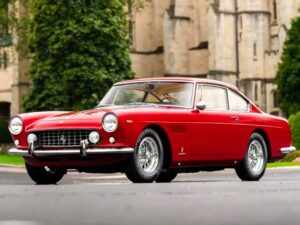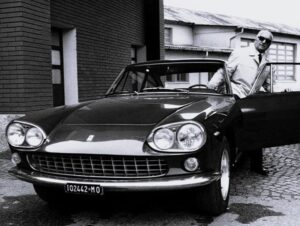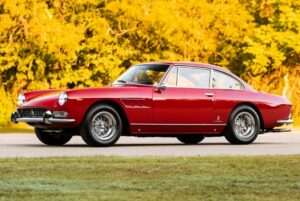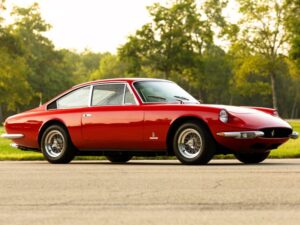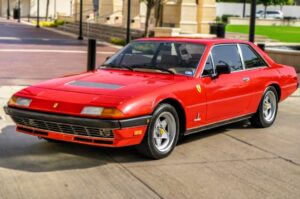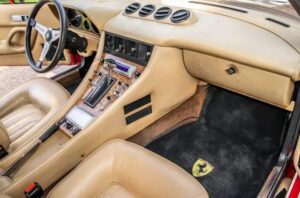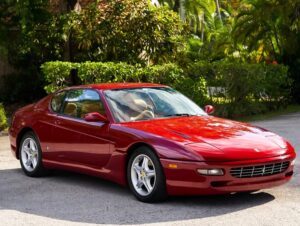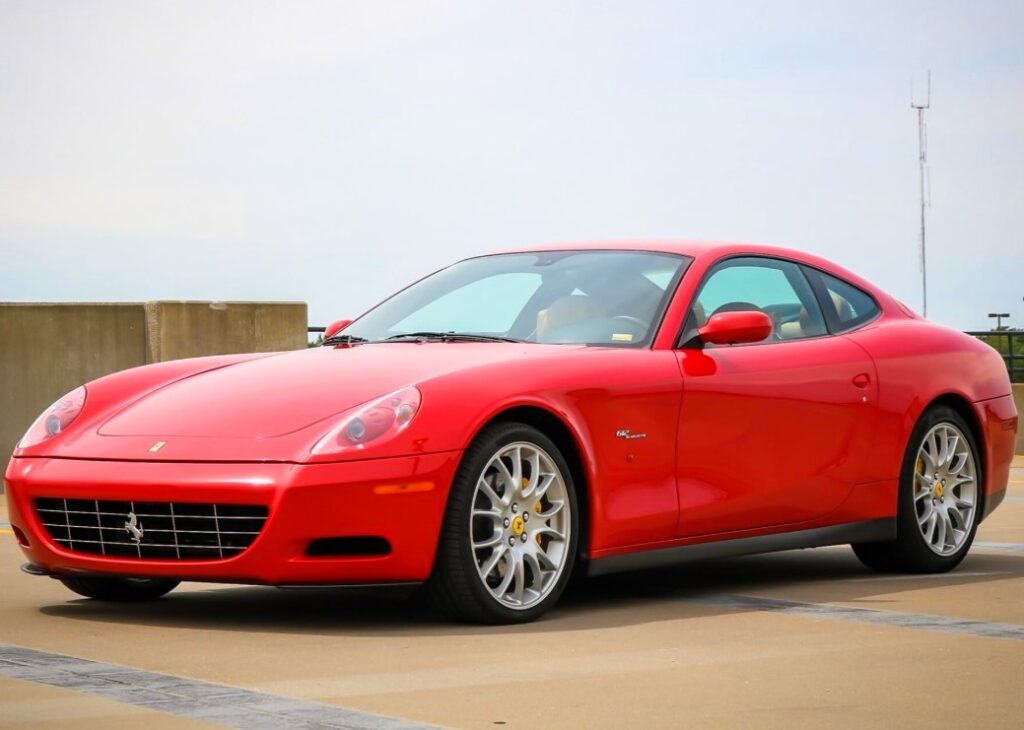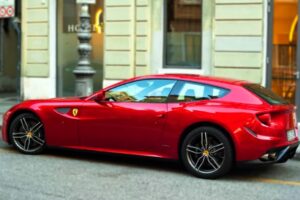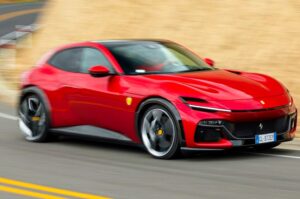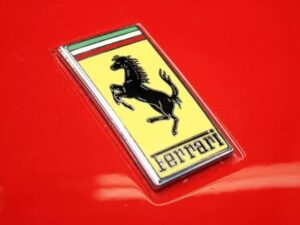During Enzo Ferrari’s tenure at the sports car company that bears his name, it was a well-known fact that he prioritized race cars over production models. The Ferrari sports cars that were sold to well-healed customers were just a means to an end – Ferrari car sales financed the Scuderia Ferrari Grand Prix race team. It has been documented that Il Commendatore (as Enzo Ferrari was reverently called) would rather spend his time at the Scuderia workshop than mind the sports car business.
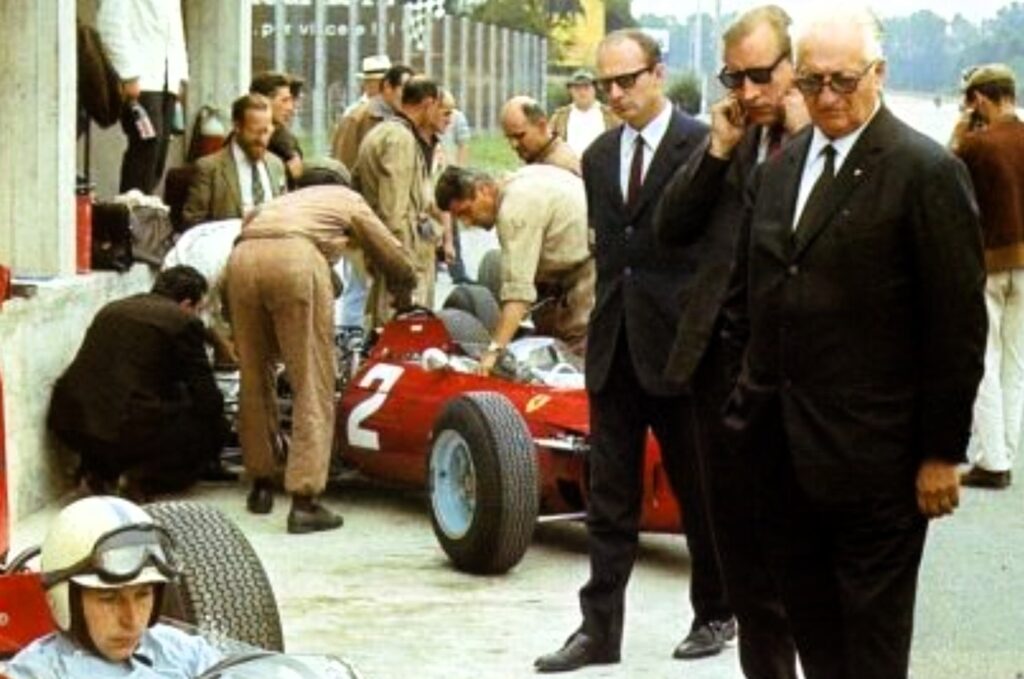
Enzo Ferrari (right) was known to prioritize his Scuderia Ferrari racing team than his auto business.
It has been common knowledge that early Ferrari road cars were actually developed from the racing machines, often being powered by the same Colombo 60° V12 or Lampredi V12 engines that do battle on the race track. Thus, most of the Ferrari production road cars were short-wheelbase biposti (2-seater) sports cars. However, as early as 1947, wealthy customers have swamped Ferrari with orders for quattroposti (4-seater) coupes so their two children (or small relatives and friends) can hop into the backseat and enjoy the ride.
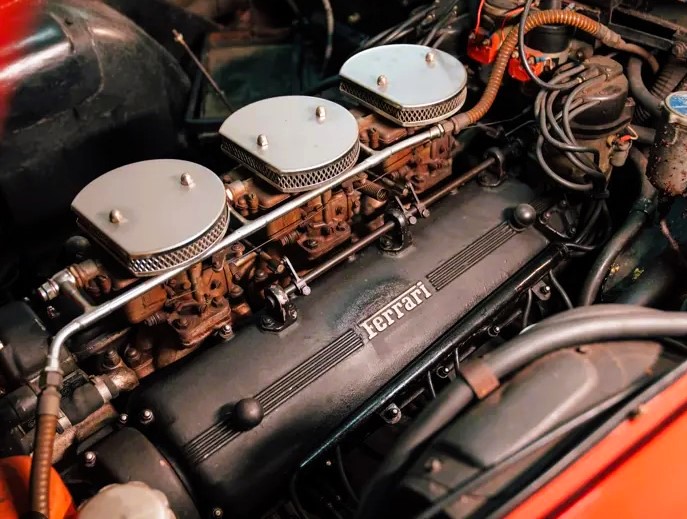
Gioacchino Colombo designed the 60° V12, which was produced from 1947 to 1989. This SOHC Colombo V12 is fitted in a 1963 Ferrari 250 GT Series II.
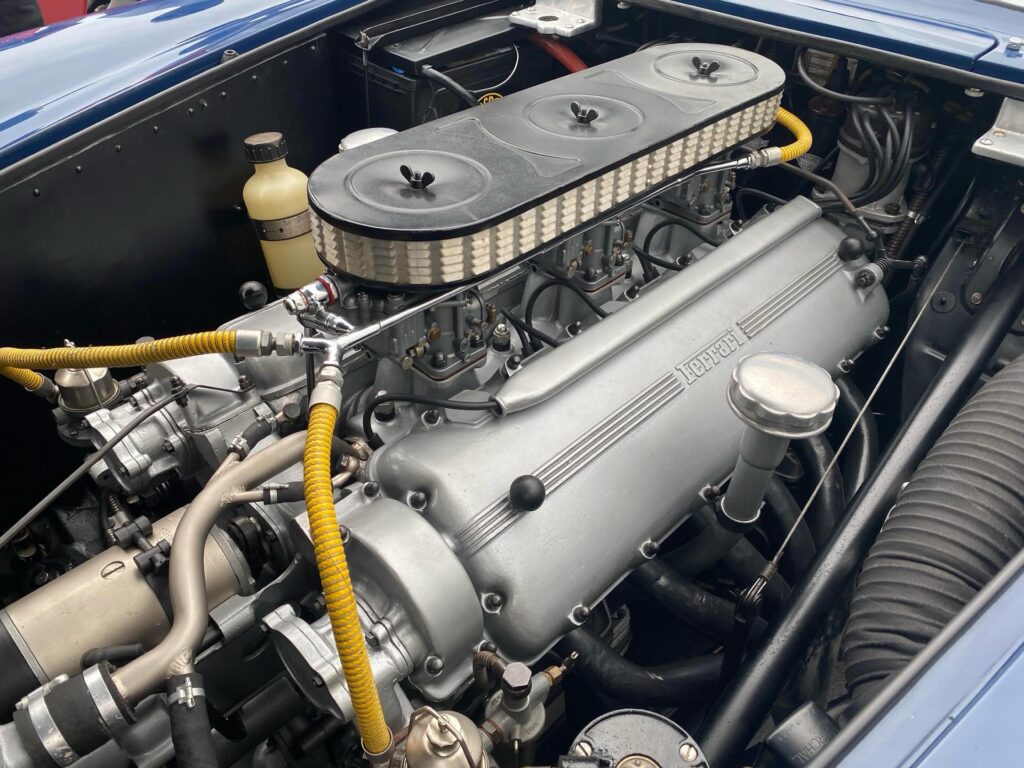
Aurelio Lampredi’s V12 engines were often used as naturally-aspirated alternatives to the Colombo V12s used in most Ferrari cars.
Money is money, so Ferrari (the factory), needing to fund the racing passion of Ferrari (the big boss) accepted the orders and lengthened the wheelbase of their sports cars to accommodate the backseat and made 4-place grand touring coupes, albeit sporadically during the early years. Here are quattroposti Ferrari models that came out of Maranello:
Ferrari 166 / 195 / 212 (1947-1951)
The 166 nomenclature came from the individual cylinder displacement of the 110 hp 2.0-liter Colombo V12 engine (1,995 cc /12 cylinders). The sports coupe was derived from the 166 Barchetta race car and was later dubbed as the Inter Coupe. Top speed was around 170 km/h as the V12’s displacement later grew to 2.3 liters (195) and 2.5 liters (212). Around 200 examples were built during its 5-year production run.
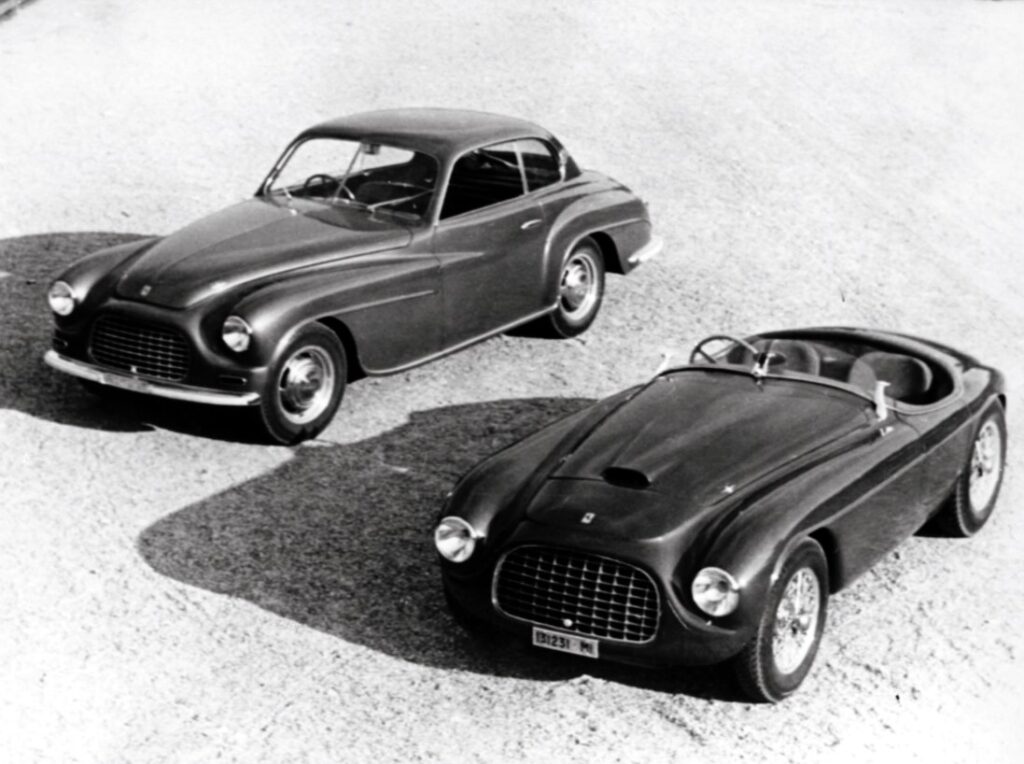
Ferrari 2+2 GTs are often based on 2-seat sports cars. The 1949 Ferrari 166 Inter Coupe is based on a stretched 166 Barchetta.
Ferrari GT / GTE 2+2 (1960-1963)
Acknowledged as the first mass-produced quattroposti Ferrari, it was fitted with a 240 hp 3.0-litre V12 engine that also powered the lighter Ferrari berlinetta sports cars. Despite the 4 seats and heavier grand touring body, the GT/E 2+2 was capable of exceeding 215 km/h effortlessly. It sold very well during its 4-year production run with 955 units produced.
Ferrari America / 330 GT 2+2 (1963-1967)
The 1963 America 2+2 Coupe was based on the 250 GTE and was meant to penetrate the American luxury car market. The V12’s displacement has grown to 4.0 liters (3967cc) and power was up to 300 hp to reach a top speed of around 240 km/h. The early 330 GT 2+2 models featured quad headlights and one became the personal car of Il Commendatore, Enzo Ferrari. Later 330 GT Series II models reverted to two headlights and a total of 1,099 examples were produced from 1963 until 1967.
Ferrari 365 GT 2+2 (1968-1970)
This Ferrari quattroposti was powered by a 320 hp 4.4-liter Colombo V12 and was the first Ferrari grand tourer to offer an independent rear suspension with a Koni- and Ferrari-developed self-leveling layout, as well as the first Ferrari GT to have power steering and air-conditioning as standard equipment. A total of 800 wealthy customers paid premium prices to experience the luxurious driving experience offered by the new rear suspension, aside from piloting this GT up to 240 km/h over interstates and autobahns.
Ferrari 365 GT4 2+2 / 400 / 412 (1972–1989)
These wedge-shaped 340 hp V12-powered 4-seater GTs were often overlooked because they were overshadowed by the sexy 308 GTB/GTS, 365 GT4 Berlinetta Boxer and Mondial 8 mid-engine sports car models that Ferrari produced during the same period. They are practical, luxurious and handsome machines that are a bit large and a bit thirsty, but can hit 245 km/h without breaking a sweat. The “4” in the 365 GT4 meant that it had a 4-cam Lampredi V12 under the hood. The later 400 and 412 2+2 GTs can be ordered with an automatic transmission, which helped sell 2,907 units during its 18-year production.![]()
Ferrari 456 / 456M (1993–2004)
After Enzo Ferrari’s death in1988, the factory placed more emphasis on car production while enjoying a winning renaissance in Formula One with Michael Schumacher starting in 2006. To replace the aging 412, Ferrari introduced the modern 456 2+2 powered by an all-new 436 hp 5.5-liter V12 that allows it to achieve a top speed of more than 295 km/h. The 456M (for Modificata) was offered from 1998 to 2004, which brought sales up to 3,289 units during the 10-year run.
Ferrari 612 Scaglietti (2004–2010)
The 612 Scaglietti was bigger than the 456/456M to provide more room for rear passengers. Its dimensions were a bit large but owners found it surprisingly good to drive. Its 5.7-liter V12 produced 533 hp that pushed it to a top speed of 320 km/h. The factory built 3,025 examples of this high-performance GT during its 7-year production.
Ferrari FF (2011–2015)
Ferrari replaced the big 612 Scaglietti with the “revolutionary” FF, which looks more like a “shooting-brake” hatchback/wagon than a traditional Italian quattroposti grand touring machine. Powered by the F140-series 6.2-liter V12 with 651 hp, the FF featured all-wheel drive (AWD), room for four, increased versatility, and a top speed of 330 km/h. Some 2,291 FFs were built in Maranello for 5 years until it was updated into the GTC4 Lusso.
Ferrari GTC4Lusso (2016–2020)
As the successor to the Ferrari FF, GTC4Lusso (Lusso is Italian for luxury) received a comprehensive upgrade that demanded a new model name. It continued the FF’s 2+2 shooting-brake GT layout with a 680 hp 6.2-liter V12 in front and all-wheel drive (AWS), but added all-wheel steering (AWS) improved performance and practicality. Top speed went up to 333 km/h and around 2,500 examples were released to Ferraristi (Ferrari fans) who loves to drive fast on snowy mountain roads on the way to the ski lodge or hunting cabin.
Ferrari Purosangue (2023–present)
Purosangue is Italian for “thoroughbred”, which probably applies only to its 725 hp naturally-aspirated 6.5-liter V12 engine, as an homage to the old-school carbureted Colombo or Lampredi V12s that powered great Ferraris of the past. While not technically a 2+2 or a grand touring machine, we included Ferrari’s first-ever four-door crossover vehicle in this selection of quattroposti Ferraris since it has 4 seats and a V12 engine.
And that’s all, folks. While the early V12-powered Ferrari quattroposti GTs may look a bit portly compared to their low and sexy biposti stablemates, the modern era V12 4-place GTs – 456, 456M, 612 Scaglietti, and heck, even the shooting-brake FF and GTC4Lusso – all look positively sporty and riveting compared to the 4-door Purosangue.

“Quattroposti” in early Ferraris meant tight backseats that fit small children or adults with short legs to ride short distances, otherwise, it’ll be a bit uncomfortable.
But times have changed and so have tastes and needs. There must be a demand for a 4-door 4-seat V12-powered Ferrari strong enough for Maranello to consider coming up with one. We’re just thankful that Ferrari still makes sexy high-performance 2-seat mid-engine sports cars as much as we’re thankful for these overlooked grand touring machines that bears the mark of cavalino rampante (the prancing horse).
 Power Wheels Magazine A Notch Above
Power Wheels Magazine A Notch Above

